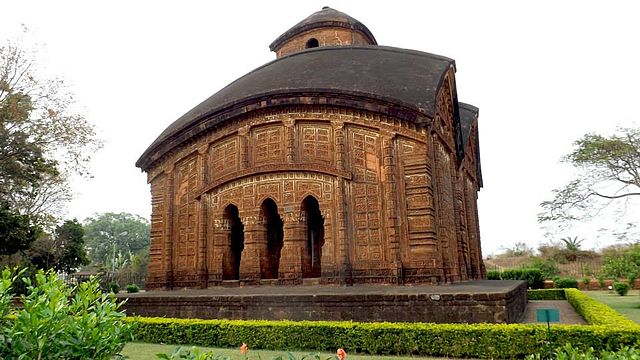Architecture of Bangladesh
Architecture of Bangladesh is intertwined with the architecture of the Bengal region and the broader Indian subcontinent. The architecture of Bangladesh has a long history and is rooted in Bangladesh's culture, religion and history. It has evolved over centuries and assimilated influences from social, religious and exotic communities. The architecture of Bangladesh bears a remarkable impact on the lifestyle, tradition and cultural life of Bangladeshi people. Bangladesh has many architectural relics and monuments dating back thousands of years.
Sixty Dome Mosque
The Tughlaq styled Sixty Dome Mosque is a UNESCO World Heritage Site, Bagerhat
Bara Katra, etching by Sir Charles D'Oyly in 1823
The Saat Masjid on the Buriganga River banks in the 19th century
The Architecture of Bengal, which comprises the modern country of Bangladesh and the Indian states of West Bengal, Tripura and Assam's Barak Valley, has a long and rich history, blending indigenous elements from the Indian subcontinent, with influences from different parts of the world. Bengali architecture includes ancient urban architecture, religious architecture, rural vernacular architecture, colonial townhouses and country houses and modern urban styles. The bungalow style is a notable architectural export of Bengal. The corner towers of Bengali religious buildings were replicated in medieval Southeast Asia. Bengali curved roofs, suitable for the very heavy rains, were adopted into a distinct local style of Indo-Islamic architecture, and used decoratively elsewhere in north India in Mughal architecture.
Ramachandra Temple, Guptipara
Terracotta relief at Kantanagar Temple
Jor Bangla Temple, Bishnupur with a curved Do-chala style roof
Hindu ritual platform, the Rasmancha, Bishnupur, c. 1600








